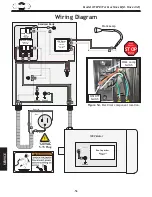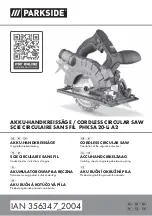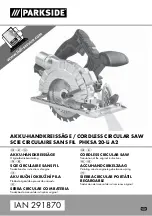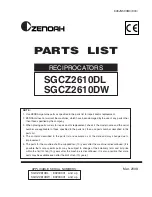
-37-
Model W1878 (For Machines Mfd. Since 4/21)
O
PE
R
ATIO
NS
Resawing
Figure.42.
Example of a resawing
operation.
"Resawing" means cutting the thickness of a board into two
or more thinner boards (see
Figure.42.
for an example).
The maximum height of a board that can be resawn is
limited by the maximum cutting height of the bandsaw.
One of the most important considerations for resawing is
blade selection—a wide blade cuts straighter and is less
prone to blade lead (see the
Blade.Lead.
subsection later
in this manual for more information).
For most applications, use a blade with a hook or a
skip tooth style. Choose blades with fewer teeth-per-
inch (from 3 to 6 TPI), because they offer larger gullet
capacities for clearing sawdust, which reduces heat
buildup and strain on the motor.
Crosscutting is the process of cutting across the grain
of wood. For plywood and other processed wood,
crosscutting simply means cutting across the width of the
material. Crosscuts can be 90° or angled using the miter
gauge. Compound crosscuts are those where the miter is
angled and the table tilted.
To.make.a.crosscut,.do.these.steps:
1. Mark workpiece on edge where you will begin cut.
2. Adjust upper blade guide assembly to the correct
height (not more than
1
⁄
4
" above workpiece).
3.
Adjust miter gauge to correct angle needed for cut.
4. Move fence out of the way. Place workpiece evenly
against miter gauge, then line up mark with blade.
5. After all safety precautions have been met, turn
bandsaw
ON
and wait for it to come to full speed.
Slowly feed workpiece into blade until blade is all
the way through workpiece.
Figure.41
shows an
example of a crosscutting operation.
Crosscutting
Figure.41.
Example of a crosscutting
operation with the miter gauge.
When.resawing.thin.pieces,.a.wandering.blade.
(blade.lead).can.tear.through.the.side.of.the.
workpiece,.exposing.your.hands.to.the.blade.teeth..
Always.use.push.blocks.when.resawing.and.keep.
your.hands.clear.of.the.blade.
Summary of Contents for W1878
Page 60: ......
















































